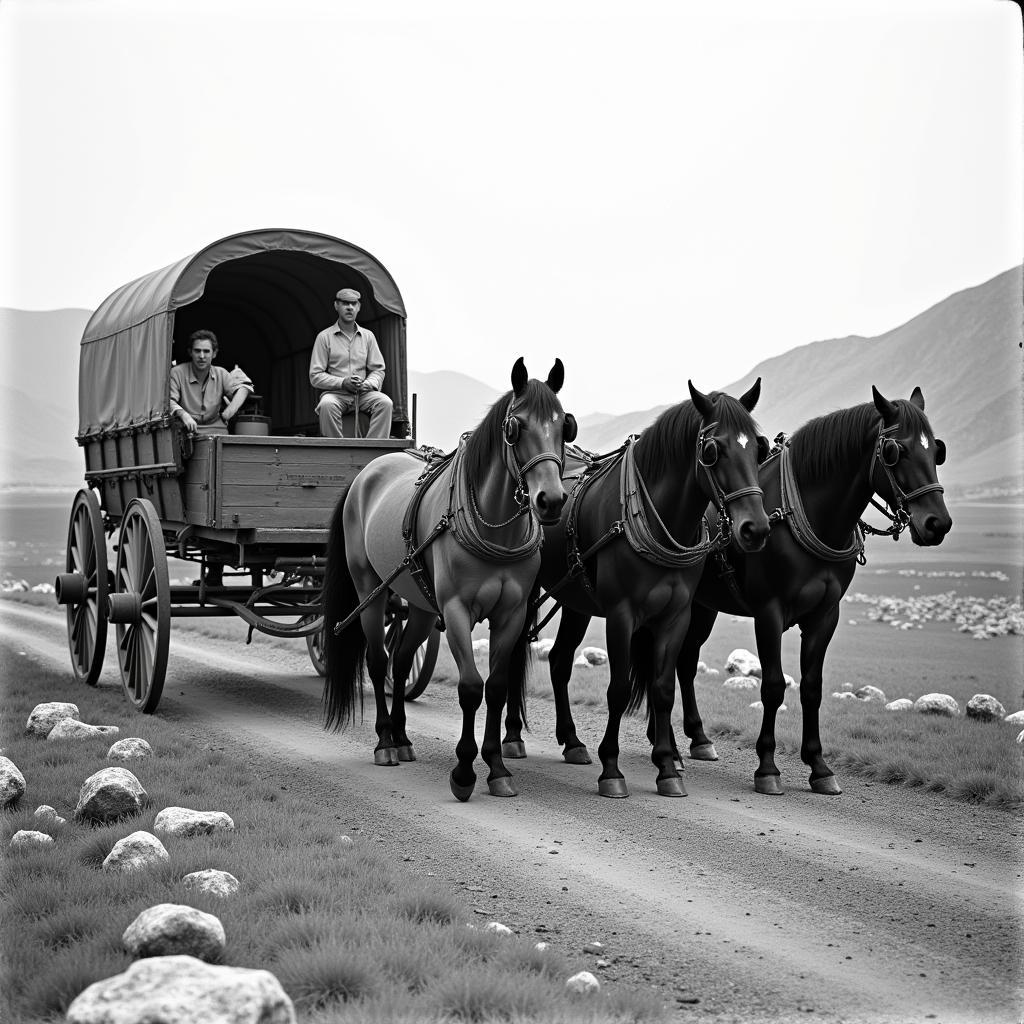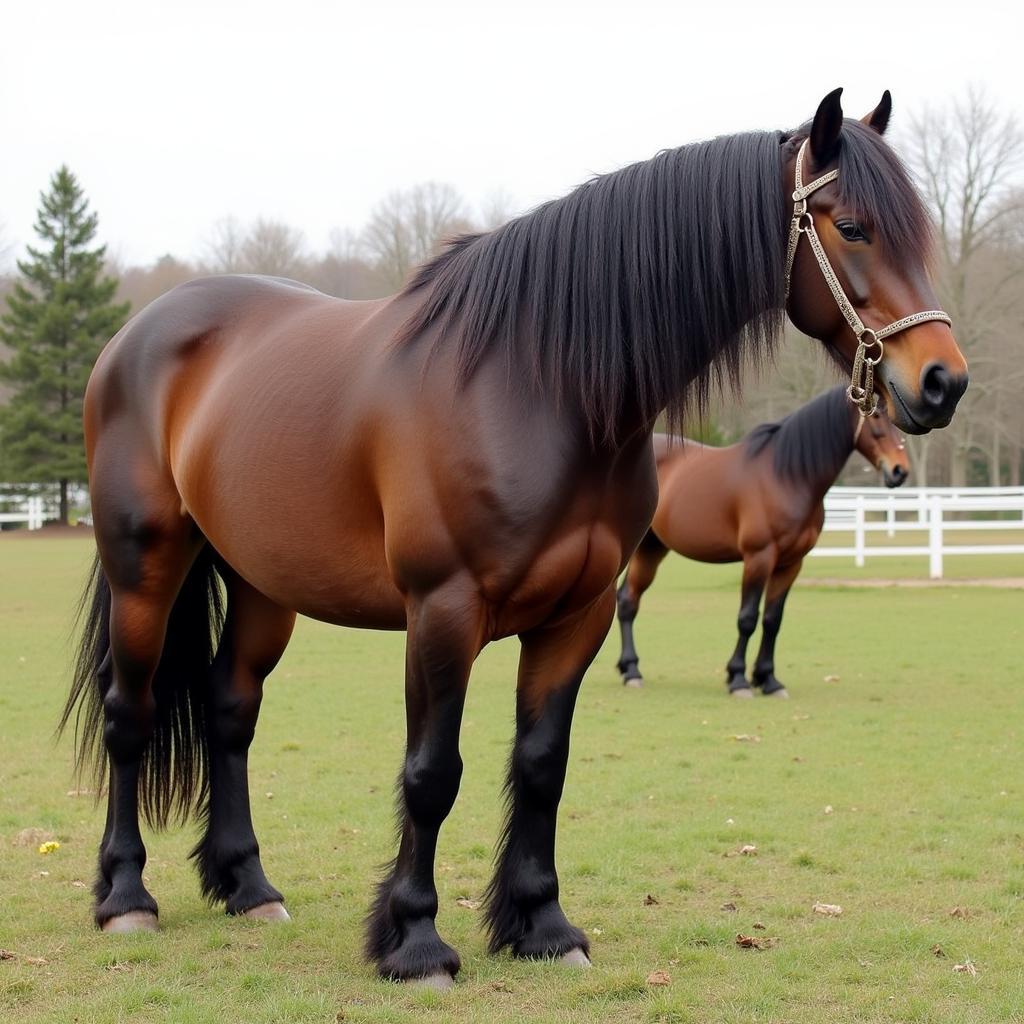The Conestoga Horse, a breed now extinct, played a pivotal role in shaping early American history. These majestic draft horses, known for their size, strength, and gentle nature, were essential for transportation and commerce across the burgeoning nation. Though they vanished over a century ago, their legacy lives on in the annals of American heritage.
Origins of the Gentle Giants
The Conestoga horse emerged in the Conestoga Valley of Pennsylvania during the early 18th century. Bred for their impressive size and strength, these horses descended from a mix of heavy European breeds, including the Flemish Horse, the Great Horse, and possibly even the Friesian. Their unique blend of ancestry resulted in a powerful yet docile animal, perfectly suited for the demands of colonial life.
These horses were much sought after for their ability to haul heavy loads over long distances. Their calm temperament and steady gait made them ideal for navigating the rough terrain and rudimentary roads of the time.
Defining Features of the Conestoga Horse
The Conestoga horse possessed a distinctive appearance that set it apart from other breeds. They were typically large and powerfully built, standing between 17 and 18 hands high and weighing up to 2,000 pounds. Their most recognizable features included:
- Color: Primarily sorrel or chestnut with a flowing mane and tail often flaxen or white.
- Head: Large and well-proportioned with a straight profile.
- Neck: Thick and arched, adding to their imposing presence.
- Legs: Sturdy and muscular with large, flat hooves suitable for traversing muddy roads.
 Conestoga horse pulling a wagon
Conestoga horse pulling a wagon
The Conestoga Horse and the Conestoga Wagon: A Perfect Pair
The Conestoga horse’s name became synonymous with the iconic Conestoga wagon, a uniquely American vehicle used extensively for westward expansion. These wagons, designed to traverse the rugged terrain of the Appalachian Mountains, were large and heavily laden. The strength and endurance of the Conestoga horse made it possible to transport goods, families, and dreams westward, contributing significantly to the nation’s growth.
A team of six Conestoga horses could haul up to six tons of cargo, traveling as many as fifteen miles a day. Their ability to endure harsh conditions and traverse difficult paths solidified their place as essential partners in America’s westward expansion.
The Decline and Extinction of the Breed
The arrival of the railroad in the mid-19th century marked the beginning of the end for the Conestoga horse. As rail lines expanded, the need for horse-drawn transportation diminished. The once vital Conestoga horse was no longer in demand, and breeding efforts dwindled. By the turn of the 20th century, the breed was declared extinct.
Several factors contributed to the breed’s demise, including:
- Competition from other breeds: The introduction of lighter, faster horses for riding and racing overshadowed the Conestoga’s draft-specific skills.
- Outbreak of diseases: Equine diseases like glanders, which ravaged horse populations in the late 19th century, may have impacted the already dwindling Conestoga numbers.
- Lack of organized breeding programs: Unlike other breeds, there was no concerted effort to preserve the Conestoga horse through dedicated breeding programs.
 Modern Conestoga horse descendant
Modern Conestoga horse descendant
Remembering the Gentle Giants
Though the Conestoga horse is gone, their impact on American history remains undeniable. Their strength and resilience helped shape the nation, transporting people and goods across treacherous landscapes and contributing to the development of the American West. Their story serves as a reminder of the profound connection between humans and animals, and the vital role certain breeds play in shaping civilizations.
Today, enthusiasts and historians strive to keep the memory of the Conestoga horse alive through research, artwork, and celebrations of their historical significance. Though we may never see these gentle giants thunder across the land again, their legacy continues to inspire awe and appreciation for their unique place in American history.